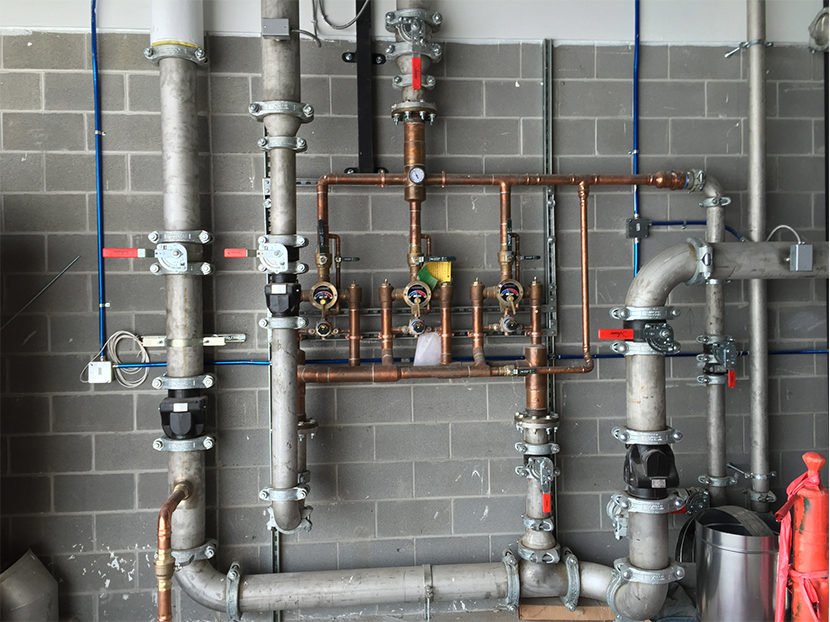The air return vents are the most essential part of your home HVAC system. They are responsible for facilitating the movement of air in and out of your HVAC system and at the same time help keep up the right air pressure within your house.
Sometimes, your air return can make extreme noise that can be very disturbing and annoying to you and the residents of the house. What’s even more worrisome is that these unusual sounds indicate an underlying problem with your system that needs to be fixed urgently.
Some of the easiest ways to quiet your air return are to change disposable filters, clean up reusable filters, reduce static pressure and examine and fix all duct-related issues
In this article, we will talk more about this in detail and other few ways methods to help you effortlessly quiet down your air return.
How to Quiet a Noisy Air Return
Check Up on the Vent Covers
Your HVAC works the same way as the human vascular system. Our body needs the same vein capacity to carry blood back to the heart(pump) and the arteries also need the same capacity to send out blood to various parts of the body.
It is based on this same principle that your HVAC system works. For instance, you cannot effectively force 1200 cubic feet of air into the house while the returning air is only 1000 cubic feet. The system will definitely cause the system to make noise.
Don’t be deceived by your eyes as having a honking big vent doesn’t mean you have a corresponding in the wall and floor. So it is necessary to inspect the vent covers and follow this suggestion to quiet return air vents.
You should allow a greater flow of air by straightening out the vanes(fins on the vent)this will help bring down the air turbulence, flutter (vibrations of fins), and humming noise.
Ensure all the vents are firmly screwed to the wall. This will help prevent the air from being sucked into a confined area around the edge which usually induces an irritating whistling noise.
Clean up the vents, try cleaning the vents if you see dust and cobwebs on them. You can also use a vacuum to suck out debris from it. You can remove the grill and wash it out
If your vent has an adjustable, then ensure you open the vent fully.
It is very important to keep all the vents open. This is because two or more blocked vents may cause the system to force pull too much air through the open vent. Replace the vent covers. You can change your vent covers if it is old and a new one might do the hack.
Use can a hang-up soundproof blanket over the air return. This will help dampen the noise. Remember the goal is to increase the airflow.
Bear in mind that decreased airflow will make irritating noise, but it will also make your furnace less effective, overwork, and possibly make it wear out faster.
Also Read:
How to soundproof noisy air vents in a room
How to quiet noisy water pipes
Change filters
The noise from your air return may be induced by clogged up or dirty filters. When this happens it makes the system works extra hard to push sufficient air and return it into the cooling chamber out heat chamber. It is advisable to change your filters once every 3 to 4 months of use.
If you want to replace your filters, you can consider opting for the filter 1900 filters. This is one of the best in the market, it comes with a combination of high-grade airflow and dust collection mechanisms.
Clean Up the Filters
If you check out and realize your filters can be reused, then you need to clean them regularly. Cleaning your filters will not only cut down duct and heater noise but will also help save money and promote efficient temperature regulations. The kind of filters your system use will help you determine how often you need to clean it.
However, electrostatic filters need to be cleaned every three months. And electronic filters should be cleaned every week. The filters usually have arrows that indicate the flow of air, these arrows will you know which side is mostly exposed to dirt and clean it thoroughly.
If you intend to clean your filter, then make sure to vacuum-clean the dust and use a hose to spray them off. If realize your filter is greasy then soak it in a tub with a mild detergent.
Examine and Fix Duck-Related Issues
When you set up your ductwork poorly it can force plenty of air into a limited space hence creating the whooshing or whistling sound. This could be caused by blockage of the vent by debris and poorly installed ductwork. If you inspect your ductwork and can’t crawl inside it simply mean it has limited space and you can’t do much to fix the noise issue.
However, there is a material called the Duct V-Max vibration dampener. This material work by clinging to the metal sheet to help reduce expansion, contraction, and vibrations, thus bringing down the noise.
If your air return duct is round, you can use foil fiberglass to wrap it up. This will possibly cut down the noise from the basement and the main floor. This approach may be enough to get rid of the flanking noise that moves through pipes and gets into your living areas.
Lower the Static Pressure
Static pressure happens when the ducts cannot handle the amount of air forced through them. If you look out and suspect the static pressure is the cause of the noise then you need to get a professional to examine and diagnose the problem.
These are a few things you can also try on your own
Replace all the vents (both incoming and return ) to a high velocity. This will facilitate the movement of air with less noise. Set up the variable-speed blower and add on more return ducting.
Use the Correct Vents and Grills for Your System
One of the easiest you can inspect to determine the source of noise is to check whether your vents and grills are of the correct size and shapes Normally your vent should have a sizable opening to allow smooth entry of air and it shouldn’t close easily.
If you realize your vents and grills are not in the correct shapes and sizes, then you need to get the service of a professional to help you replace the right shapes and sizes. You can also tighten up loose parts that aren’t sealed properly.
Soundproof the Air Return Vents
If you realize the air vents and air ducts are the culprits behind the noisy nuisance. You can simply install a return air grille with sound attenuation. This will help regulate the return air sound and probably cut down the noise.
However, it is near impossible to soundproof the vent with hindering airflow. This makes it difficult to cover up your vent with any soundproof material
In most cases the materials used to make the air vents are not sound absorbent this is why they are mostly loud. However, you can get a professional to fix a sound-deadening layer within to help bring down the noise.
For wall vents, you can easily cover them up with soundproof curtains. These curtains are made of heavy and thick woven materials hence they can dampen sound.
Get a Professional to Check Up on Your System
If you have tried your possible best and still can’t figure out the cause of the noise, get an HVAC technician to do the job. For problems in the central return, deficient return vent excessive static pressure, or whatever the problem may be the professional will be able to fix it. You don’t need to do any more trial and error as that may end up causing more damage.
Conclusion
Sometimes your air return noise can be fixed easily. So always look out for the simple issues you can fix and this may include cleaning up the filters, changing vents, and wrapping the duct. If you are not sure of anything, just call up an HVAC professional to come and check up on your system. As the system is very complicated and you might cause more damage trying to fix the noise problems all by yourself.
- How to Chew Quietly While Eating-Effective Tips - April 14, 2023
- Why is My Clutch Pedal Squeaking – Causes & Fixes - April 14, 2023
- Propane Tank Making Hissing Noise (Solved) - February 25, 2023

